Ruban Nielson explains how custom collaborations with Baranik and Benson, along with a paunchy pedalboard with homemade clones, unlock a psychedelic playground in stereo.
“Gear is meant to be destroyed in the line of duty,” laughs Ruban Nielson. “I realize I prefer to see my equipment all dinged up rather than sitting perfect in my basement—that’s a dorky thing to do.”
That doesn’t mean Nielson doesn’t care about his sound. He noted in a 2015 interview with PG that he spends countless hours in his basement tinkering on breadboard circuits and swapping out components, trying to maximize a pedal for his needs. “I like the idea that instead of buying your sound, you’re building your sound,” he said.
Over the course of 14 years, five albums, and thousands of touring miles, Nielsen has been custom-fabricating his guitar voice. But as we all know, the quest is never-ending, like trying to catch the horizon. After all, isn’t it the journey, not the destination, that matters?
“I used to be too much of a savage to care about a clean boost or headroom,” says Nielson. “‘Just give me a distortion pedal already!’ But now I’m exploring the intricacies, subtleties, and nuances of guitar.”
Ahead of Unknown Mortal Orchestra’s headlining performance at Nashville’s Brooklyn Bowl, Ruban Nielson welcomed PG’s Chris Kies onstage to explore his current sonic lab. Nielson covers his two space-age guitars (and what inspired them), explains how he convinced Benson to put a Monarch inside a vintage solid-state Yamaha, and details the pedals—including a few of his own designs—that extract a kaleidoscope of moods.Brought to you by D'Addario.
Challenge Accepted: The B3-R
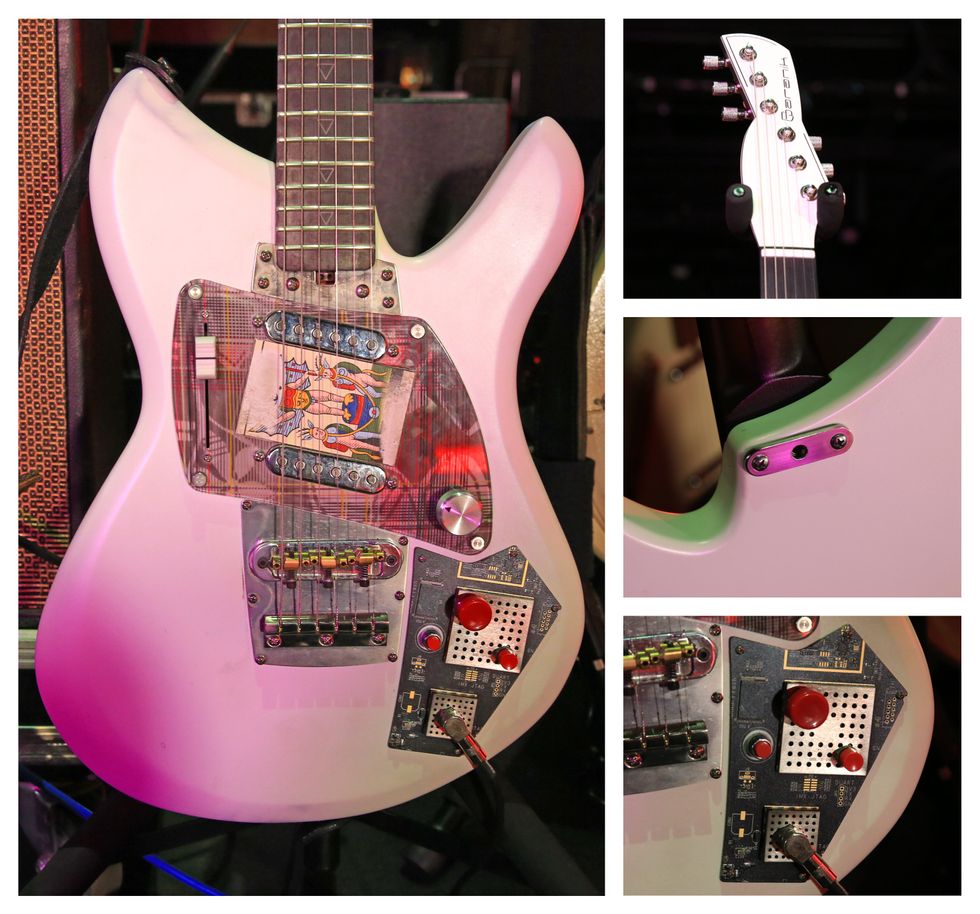
Since forming Unknown Mortal Orchestra in 2009, the instrument that Ruban Nielson has been linked to and inspired by is the Fender Jag-Stang. This short-scale offset was codesigned by Kurt Cobain in the early ’90s by simply taking photos of Fender’s Mustang and Jaguar, splitting them in half and pasting them together. The Jag-Stang was treated to separate production runs in the late ’90s and early 2000s before a wider release in 2021. Nielson’s friend gifted him a cherry-red model, shaping Unknown Mortal Orchestra’s first decade of music.
In 2015, Nielson told PG about its impact on his playing style and creative outlook: “When I started on the UMO stuff I pulled it out. It would never stay in tune and sounded really strange, but when I plugged it into a Blues Junior, I started to come up with completely different ideas. I tuned it a half-step down and started playing with my fingers. It was just a whole new style that emerged in the space of about two weeks after messing with this guitar. It’s a kind of imperfect creature and that’s what I like about it.”
Fast forward to a few years ago when Ruban met luthier Mike Baranik. Baranik was a longtime fan of UMO and knew of Nielson’s allegiance to the Jag-Stang, so he approached Nielson with a proposition: “I can make a guitar that will do everything that the Jag-Stang does better and more.” Nielson was intrigued, so the build began. They conversed and collaborated over several phone calls and text chains that culminated in Nielson realizing Baranik was “some kind of genius through his simple innovations that suited the way I think about music and guitar.”
The flaws of the Jag-Stang that informed Nielson’s playing style became features on the above Baranik B3-R. The biggest thing that Ruban wanted translated from the Jag-Stang to the Baranik was the slinky neck pocket that allowed for him to push the neck for emotive bends à la Bill Frisell.
Nielson explains: “When I tuned the Jag-Stang a half-step down—which I just did because Jimi Hendrix did it, and I thought if I was going to start writing some new music that this was my chance to start messing with that—that loosened the strings up. The neck was a smaller scale so it gave me the ability to do completely different things. I was able to get around the neck a lot easier.”
To make that body-neck connection even more expressive and manipulatable, Baranik constructed the trademarked Baraneck floating neck that fastens two springs to the neck joint allowing Nielson to tighten or loosen the neck as wanted. Nielson also routed out wood behind the pickups on his Jag-Stang to reduce the weight and keep it light as possible—just five pounds, nine ounces. The B3-R has a basswood body, koa neck, and ebony fretboard.
Another thing Nielson requested was an approximation of the sound of pickups found in vintage Japanese lawsuit-era instruments, which were often unique, unpotted, and unpredictable. Baranik worked his magic and, via his own alchemy, produced these potted single-coils. Other tag-team easter eggs include a custom Hawaiian print pickguard, an upcycled circuit board control panel, and custom inlays—a row of shark teeth, filled with crushed bone dust—that are a tribute to the family symbol.
All of UMO’s material is based on half-step-down tuning both of his electrics take Ernie Ball Super Slinkys (.009-.042). Nielson goes with a Shure Axient wireless pack at both his Sitar and Baranik guitars and to keep things quiet and tidy, his tech Ben Gram inserted an Electro-Harmonix Hum Eliminator and a Radial Dragster Load Correction box.
Psy-tar
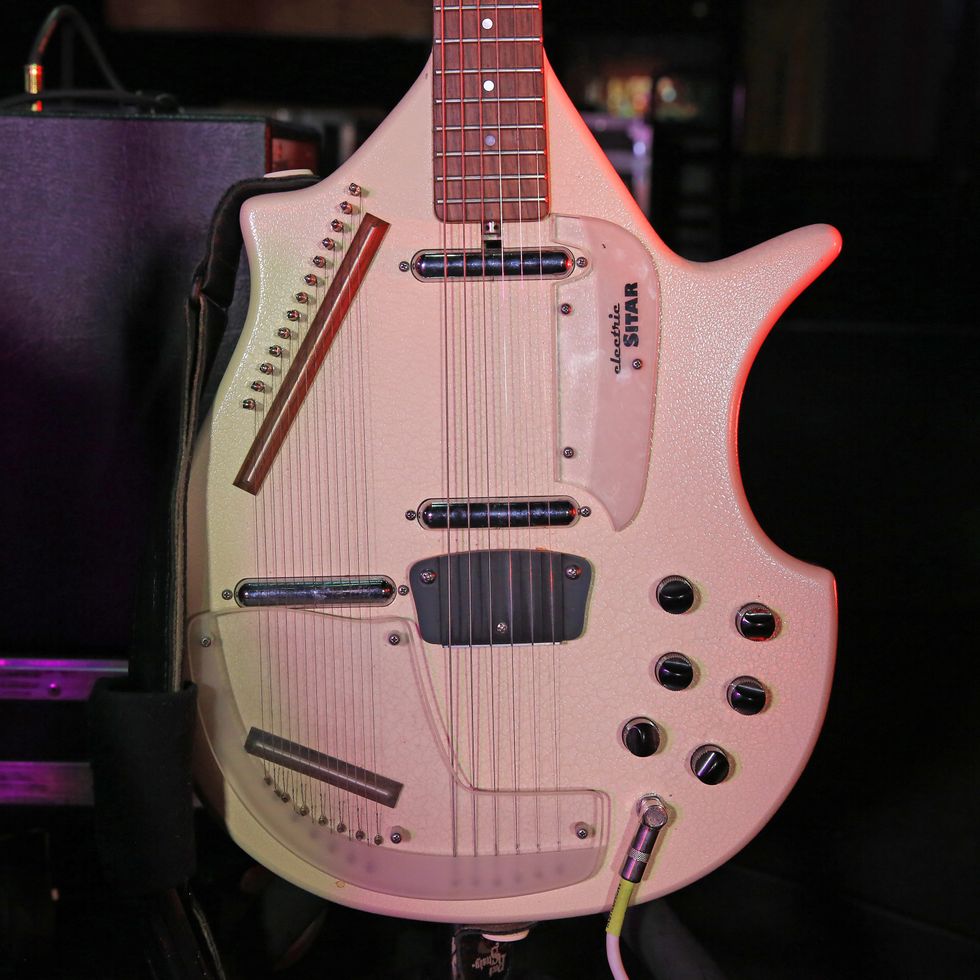
Two of the songs on UMO’s fall setlist required a sitar. Nielson previously toured and recorded with a Rogue Sitar, but found it to be a nuisance to maintain on the road. He searched for a sturdier stand in and found this electric sitar star: a Jerry Jones model whose voice wholly celebrates Nielson’s love for early psych-rock, and matches its chime with rugged dependability.
Nate the Great
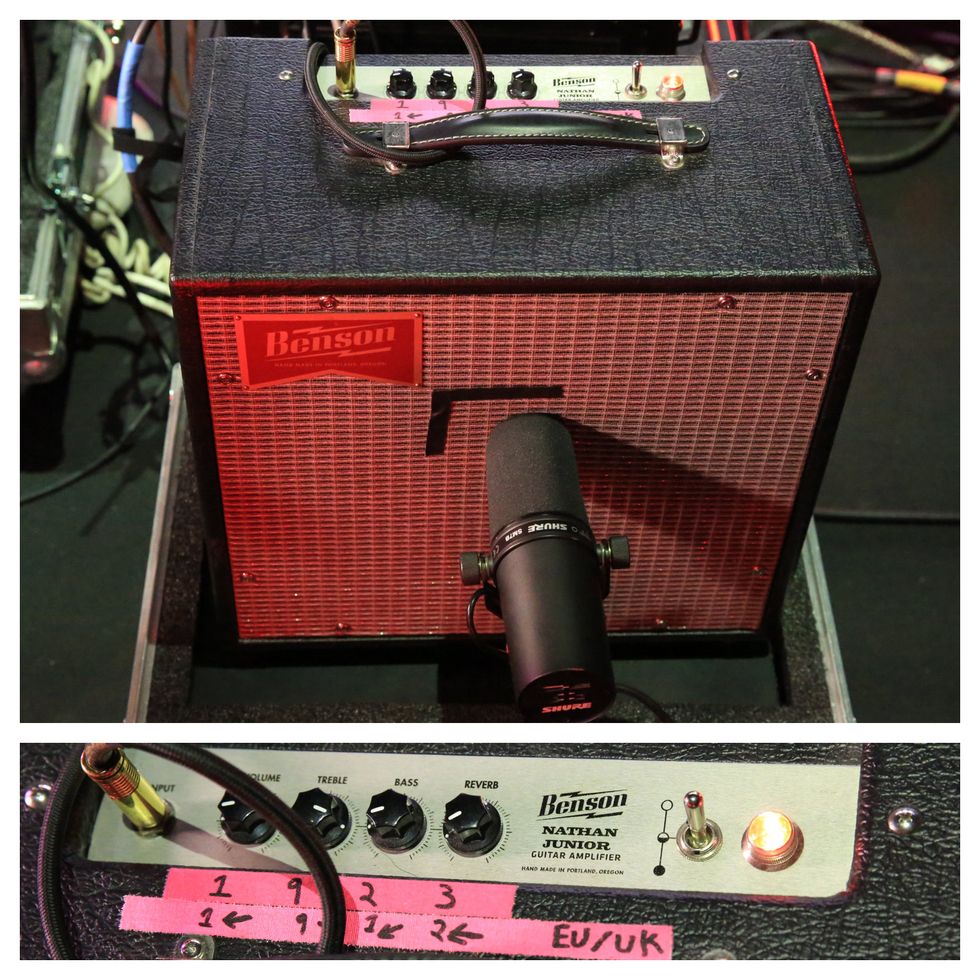
Nielson has plugged into all sorts of amps since 2009 when playing under UMO. The longest sidekicks include Fender combos and Orange heads. (When Ruban spoke with PG in 2015, he had a Fender Hot Rod DeVille and an Orange AD 30 head.) He notes in the Rundown that a few years back, he was “getting frustrated with his amp setup and thought he should be like one of those real guitar guys and find a boutique amp company.” After auditioning some combos, he landed on a Benson. One half of Ruban’s stereo setup is the Benson Nathan Junior that maxes out at 5W, has a single JJ 6V6 power tube, and barks with a 10" Celestion Greenback.
Benson in Yamaha's Clothing
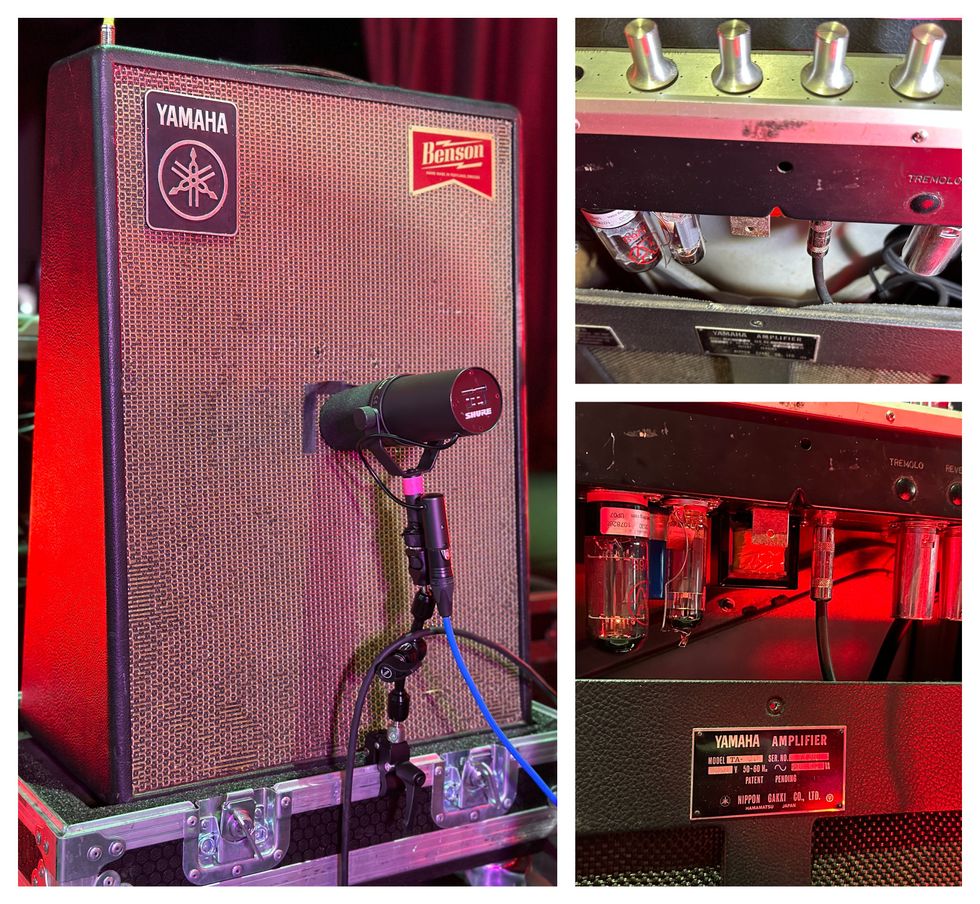
Nielson has his feet firmly planted in both amp camps. He appreciates the beef, brawn, and chime only produced by power tubes, but he’s also attracted to the old solid-state amps that offer quirky, charmingly weird tones. Chris Benson’s shop happened to be within walking distance of Nielson’s home, so after becoming acquainted and friendly, Nielson pitched a project for Benson: Could he turn a ’70s solid-state Yamaha TA-20 into a roadworthy tube amp? Benson initially balked at the idea, and Nielson thought his plan was foiled. Three years later, Benson reached out and asked if Nielson still had the Yamaha—he did—so Benson told him to bring it by the shop, and they’d retrofit a Benson circuit into the TA-20. “My weird dream to bring this on tour was finally happening!” says Nielson.
The TA-20 is packed with Benson’s Vinny Reverb guts that includes a JJ EL84 power tube, a 12AX7 preamp tube, a 12DW7, and a JJ 6V6 power tube as a voltage regulator that goes from .25W up to a snarky six watts. The overhauled TA-20 does still have the original polystyrene parallelogram speaker. Both amps are always on, and miked up with Shure SM7Bs.
Ruban Nielson's Pedalboard
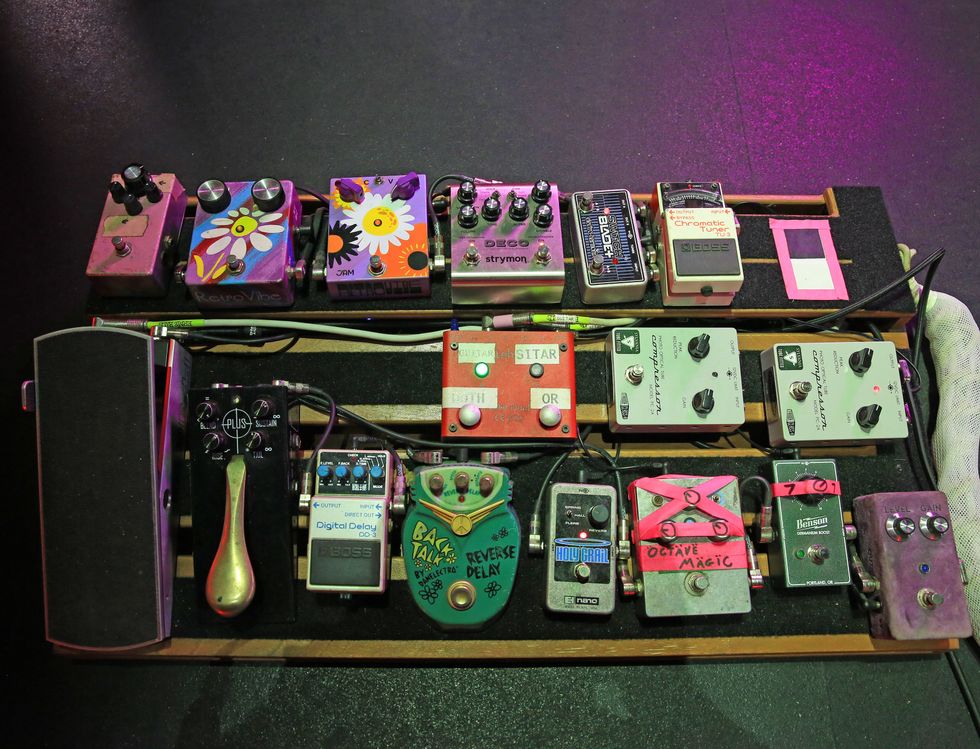
Nielson is a tonal tactician. He’s never been satisfied with stock sounds and a pedal’s inherent limitations. “If I find a pedal I like, I use it for a long time and then I try to build a clone to see if I can improve on it,” he explains. “I sit around in my basement tweaking it plugged in—on the breadboard—and changing out different components and adjusting the trim until I get everything just exactly how I want it.” So, looking down at his stomp selection you’ll notice a few nondescript devices on the beautiful Twin Peaks Woodworks pedalboard custom-built by both Nielson’s tech Ben Gram and Caspian guitarist Jonny Ashburn.
His signal hits an Effectrode PC-2A Tube Compressor (you’ll notice two on the board—one is a backup). That’s a change from our 2015 interview, when he he was using an Analog Man Bi-CompROSSor and had it at the end of his chain. (“It’s nice to have a compressor at the end of everything—especially with a phaser pedal, which has frequency spikes,” he said at the time. “It’s nice to control them.”) He enjoys how the PC-2A up front fattens his entire sound, and how it smooths and shaves off the transient tinges. The Strymon Deco has a stereo out that hits a pair of Jam RetroVibes. Both are set to have slightly different speeds and depths so that they really take that stereo signal for a journey in real time, and Dave at FOH has them panned in the PA to really amplify this effect.
One of Nielson’s creations shows up inside the gray box titled “Octave Magic,” which is based on the Foxx Tone Machine. The suede purple devil next to it is the Jam Pedals Fuzz Phrase LTD, about which Nielson says, “It’s the wooliest, most-musical Fuzz Face I’ve ever played.” Sometimes the answer to Nielson’s problems is the Benson Germanium Boost. “If something’s wrong,” he explains, “I’ll kick on that pedal and it makes everything louder and resets the gain structure.” The Gamechanger Audio Plus pedal sees a lot of action throughout the set: it helps Nielson seam the tail end of a solo and discreetly rejoin the band in rhythm mode.
The remaining pedals include a Boss DD-3 Digital Delay (a gift from Mike Baranik), a Danelectro Back Talk reverse delay, an Electro-Harmonix Holy Grail reverb, and in the top-left corner, an unnamed pedal that Nielson built that is currently not in the signal. (He can’t remember if it’s a Rat or Tube Screamer clone.) Utility boxes include a Boss TU-3 Chromatic Tuner, an Electro-Harmonix Switchblade Plus channel selector, and a Lehle Little Dual II switcher.
Shop Ruban Nielson's Rig

Benson Monarch
Shure SM7B
Strymon Deco
Benson Germanium Boost
Boss DD-3 Digital Delay
Danelectro Back Talk Reverse Delay
Electro-Harmonix Holy Grail Reverb
Boss TU-3 Chromatic Tuner
Electro-Harmonix Switchblade Plus Channel Selector
Lehle Little Dual II ABY Switcher
Ernie Ball Super Slinky Strings




![Rig Rundown: Russian Circles’ Mike Sullivan [2025]](https://www.premierguitar.com/media-library/youtube.jpg?id=62303631&width=1245&height=700&quality=70&coordinates=0%2C0%2C0%2C0)




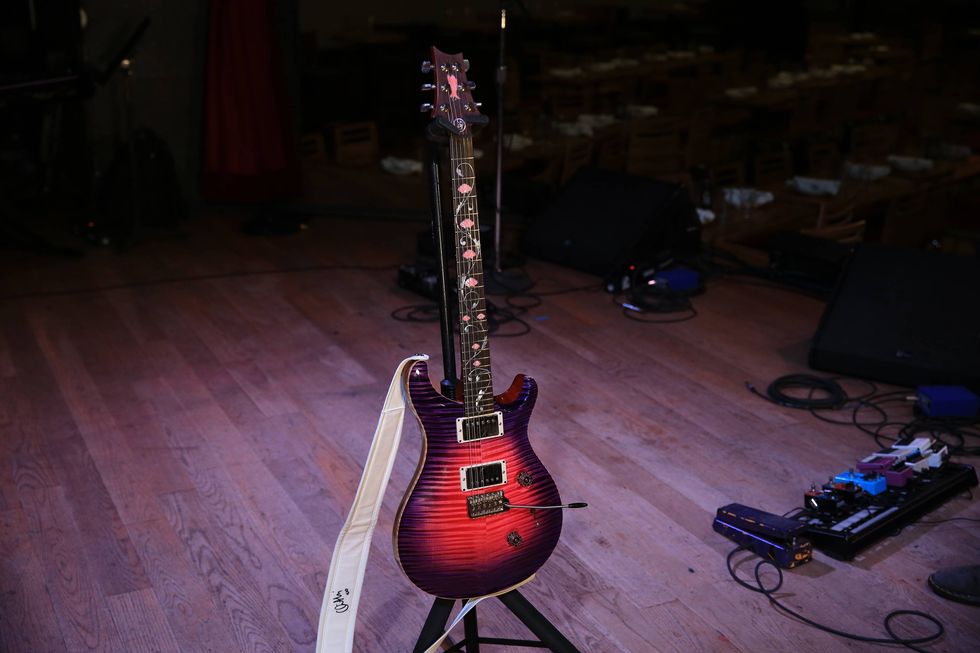
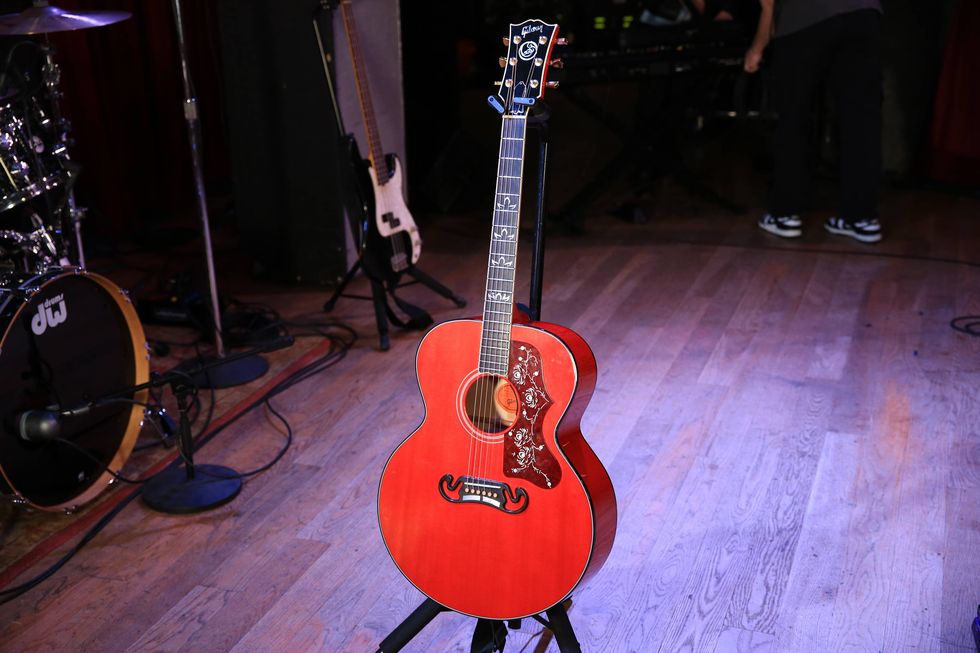
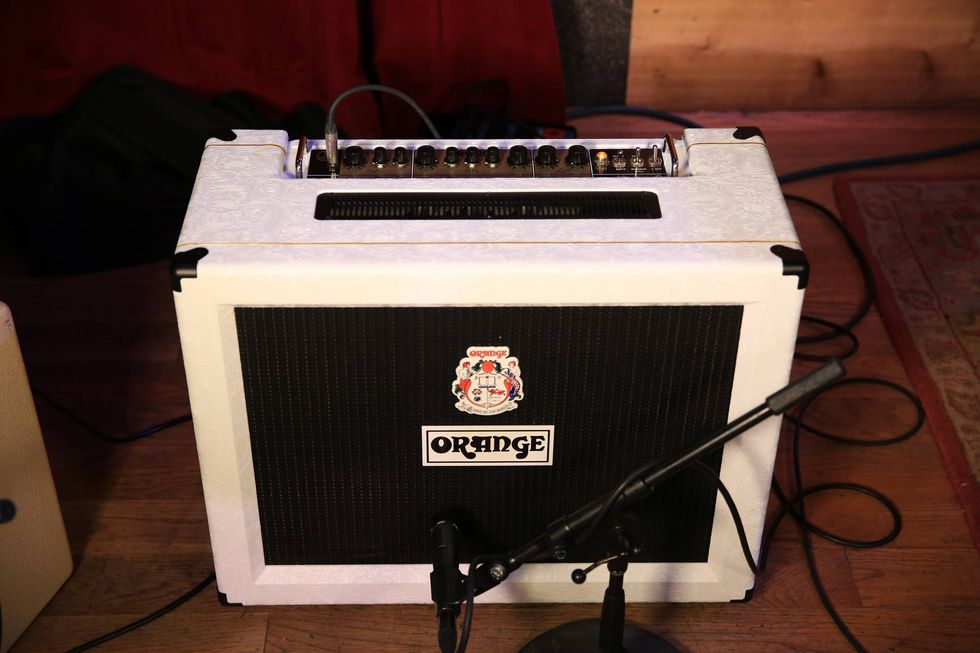
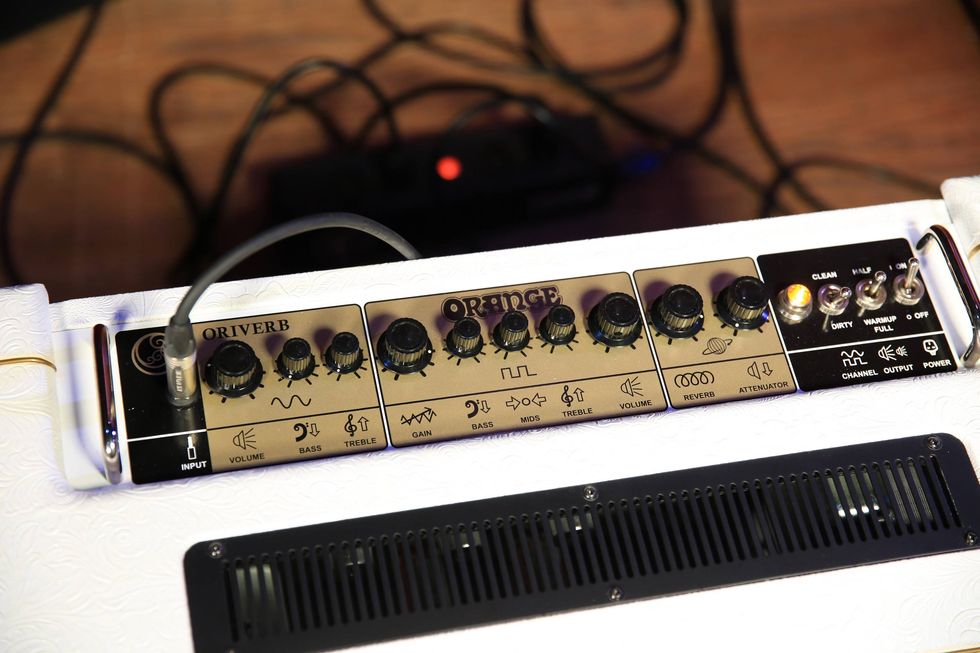
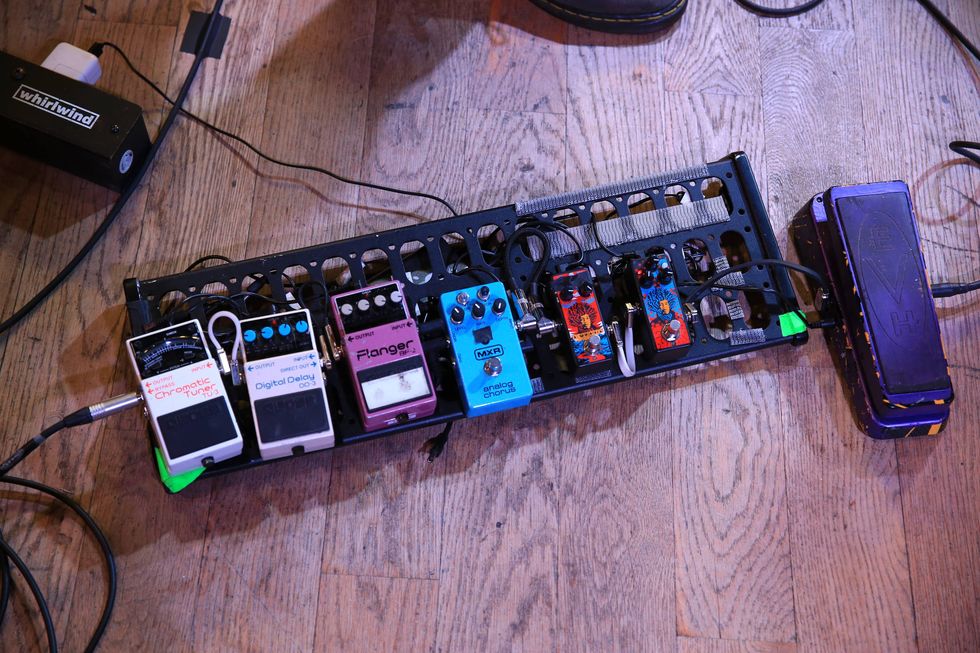







![Rig Rundown: AFI [2025]](https://www.premierguitar.com/media-library/youtube.jpg?id=62064741&width=1245&height=700&quality=70&coordinates=0%2C0%2C0%2C0)












 Shop Scott's Rig
Shop Scott's Rig







 Zach loves his Sovtek Mig 60 head, which he plays through a cab he built himself at a pipe-organ shop in Denver. Every glue joint is lined with thin leather for maximum air tightness, and it’s stocked with Celestion G12M Greenback speakers.
Zach loves his Sovtek Mig 60 head, which he plays through a cab he built himself at a pipe-organ shop in Denver. Every glue joint is lined with thin leather for maximum air tightness, and it’s stocked with Celestion G12M Greenback speakers.

















![Devon Eisenbarger [Katy Perry] Rig Rundown](https://www.premierguitar.com/media-library/youtube.jpg?id=61774583&width=1245&height=700&quality=70&coordinates=0%2C0%2C0%2C0)






